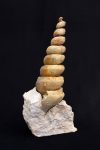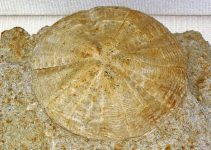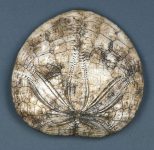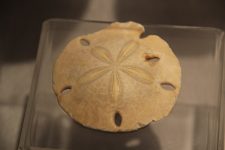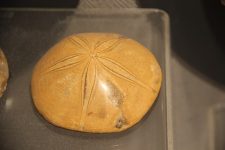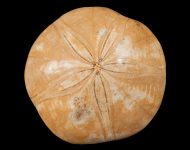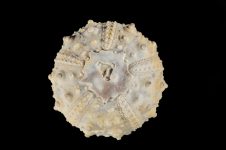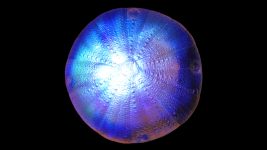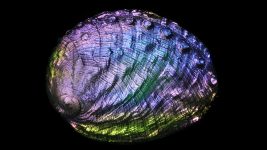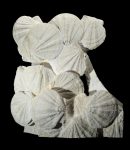Fossil Sand Dollar
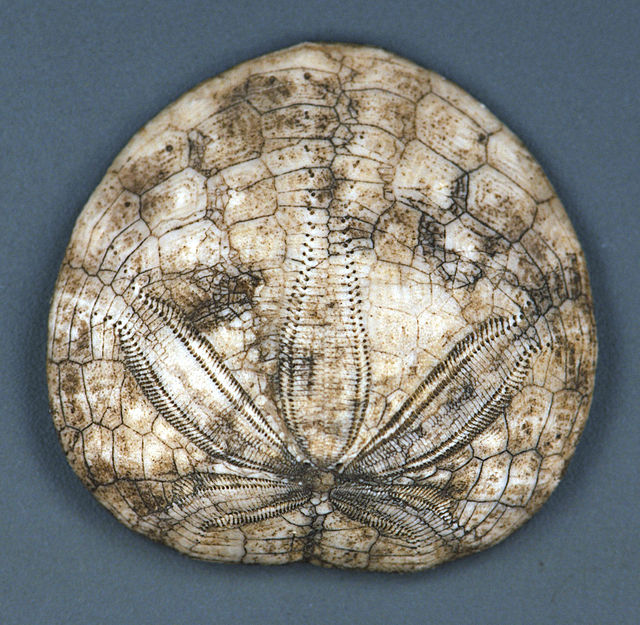
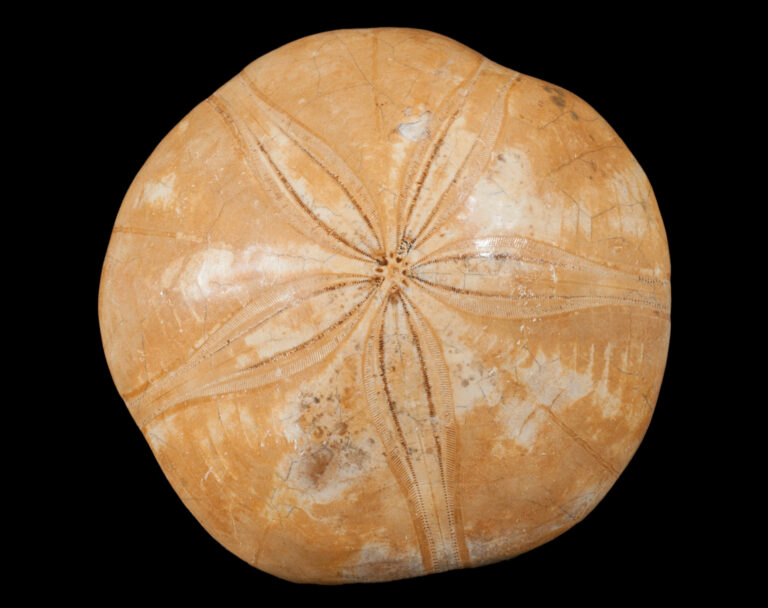
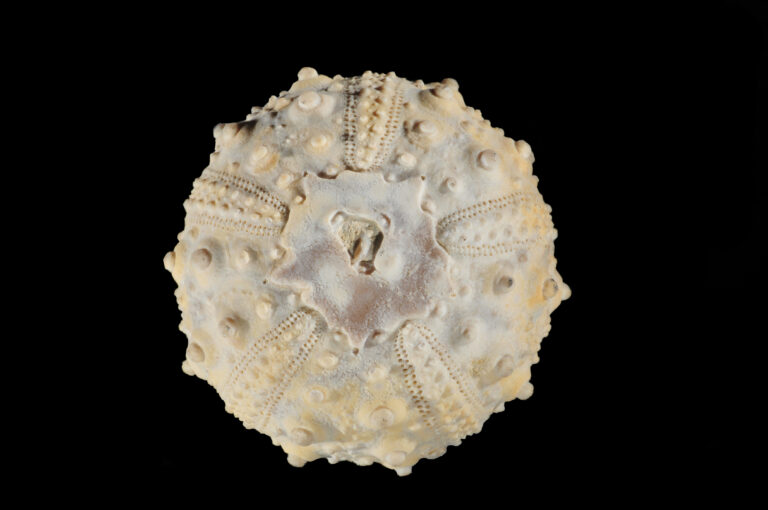
Fossil Sand Dollar
Fossil sand dollars, like their modern counterparts, belong to the class Echinoidea within the phylum Echinodermata. These ancient marine organisms left behind distinctive skeletal remains that offer important clues about their evolutionary development, ecological roles, and the environments they inhabited over geological time scales.
Evolutionary Origins and Early History
Sand dollars have a long evolutionary history dating back millions of years. Fossilized remains of sand dollars and related echinoids have been found in marine sediments from various geological epochs, spanning from the Paleozoic to the Cenozoic eras. Early forms of echinoids, known as cidaroids and irregular echinoids, evolved during the Paleozoic era and gave rise to more familiar forms like sand dollars during the Mesozoic era.
Physical Characteristics of Fossil Sand Dollars
Fossil sand dollars, or tests, are composed of calcium carbonate plates arranged in a radial pattern, much like those of modern sand dollars. These plates are often well-preserved in fossil specimens, providing detailed information about the skeletal structure and morphology of ancient echinoids.
The fossilized remains of sand dollars typically exhibit the distinctive pentameral symmetry characteristic of echinoderms, with five-parted arrangements of skeletal plates radiating from a central point. This symmetry is a key diagnostic feature used by paleontologists to identify and classify fossil sand dollars within the broader diversity of echinoids.
Paleoecological Insights
Studying fossil sand dollars offers valuable insights into past marine environments and ecosystems. Fossils found in sedimentary rocks provide clues about ancient seabed conditions, such as water depth, sediment types, and ecological interactions. For example, the presence of fossil sand dollars in specific rock layers can indicate the presence of shallow marine environments where these organisms thrived.
Fossil sand dollars also contribute to our understanding of ecological relationships and community dynamics in ancient seas. Their fossilized remains may be found alongside other marine organisms, such as mollusks, corals, and other echinoderms, providing a holistic view of past marine biodiversity and evolutionary trends.
Geological Distribution and Stratigraphy
Fossil sand dollars have been discovered in marine sediments around the world, reflecting their global distribution and adaptation to diverse oceanic environments throughout geological history. Paleontologists study the stratigraphic distribution of fossil sand dollars to reconstruct evolutionary patterns, track changes in species diversity, and correlate fossil assemblages with geological events and climate changes.
Significance for Evolutionary Studies
Fossil sand dollars are important for understanding the evolutionary relationships and phylogenetic history of echinoids. Comparative studies of fossil and modern sand dollars help elucidate the morphological changes, adaptations, and ecological transitions that occurred within this group over millions of years.
By analyzing the fossil record, paleontologists can reconstruct the evolutionary trajectories of sand dollars and infer evolutionary processes such as speciation, extinction events, and adaptive radiations. Fossil sand dollars serve as valuable indicators of evolutionary change and biological innovation in marine ecosystems throughout Earth’s history.
Educational and Scientific Value
Fossil sand dollars are valuable resources for education, scientific research, and public outreach. They provide tangible evidence of ancient life forms and illustrate principles of paleontology, evolutionary biology, and Earth history. Museums and educational institutions often display well-preserved fossil sand dollars to engage the public and promote awareness of Earth’s natural heritage and biodiversity.
